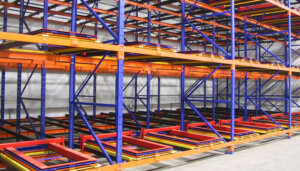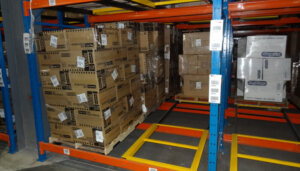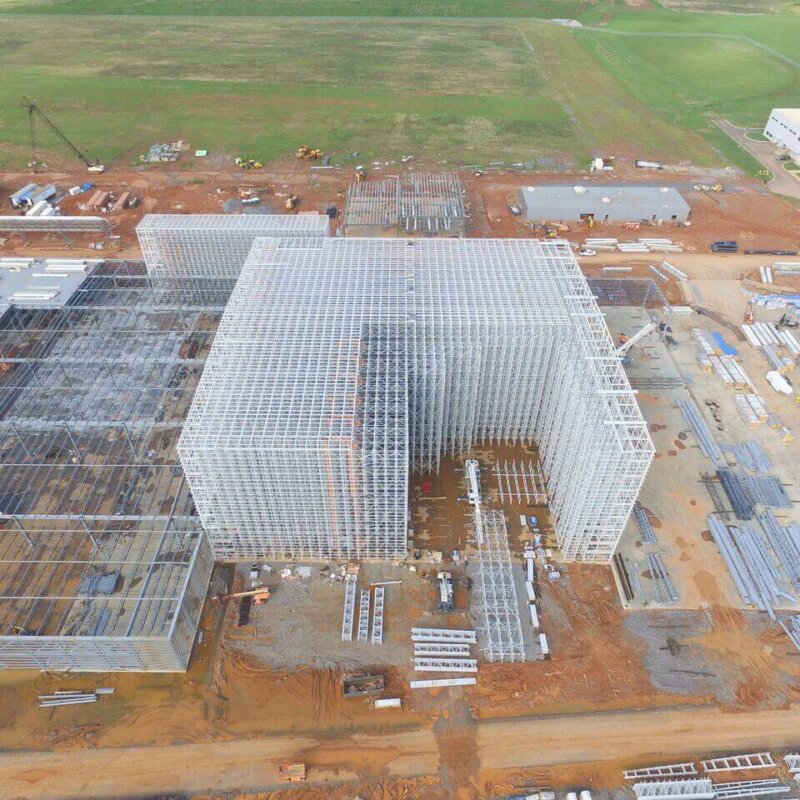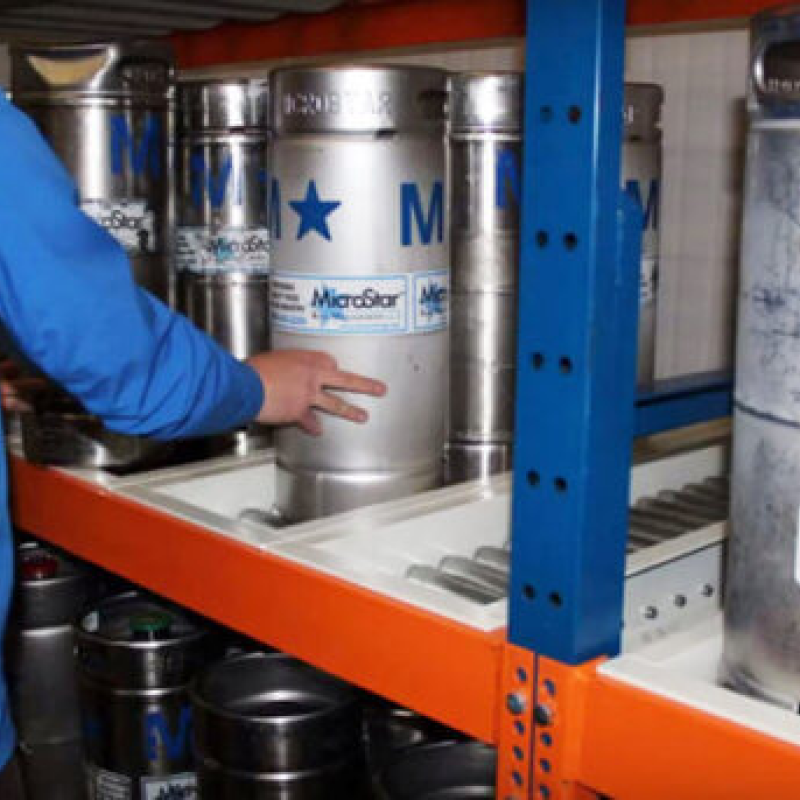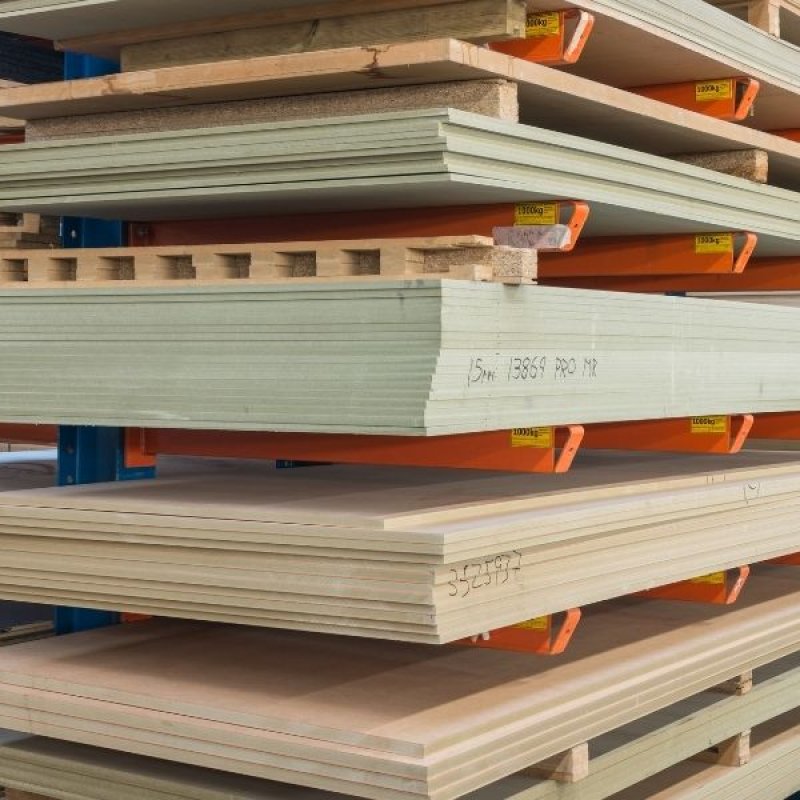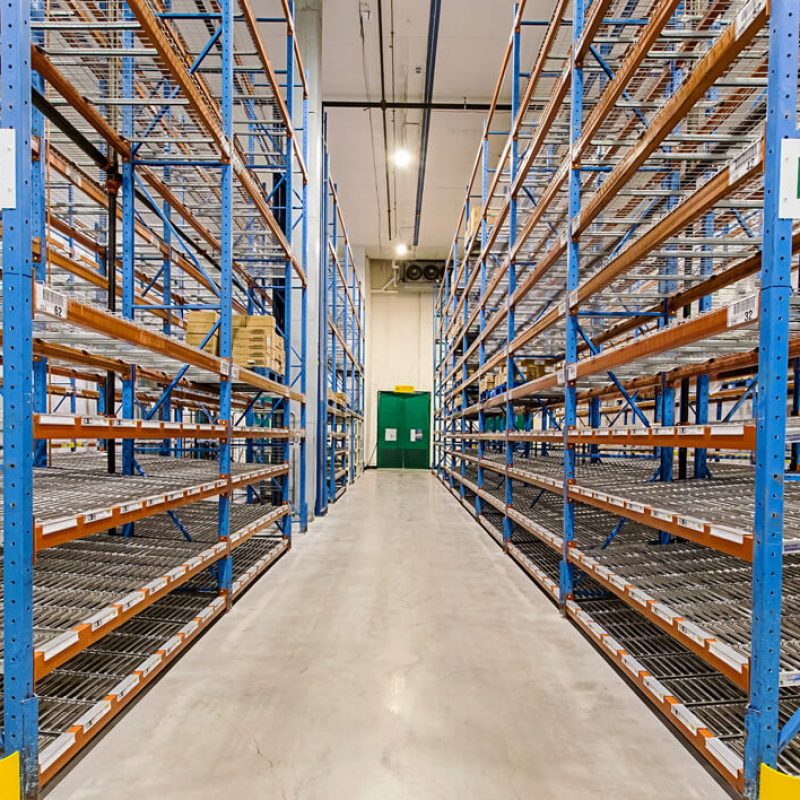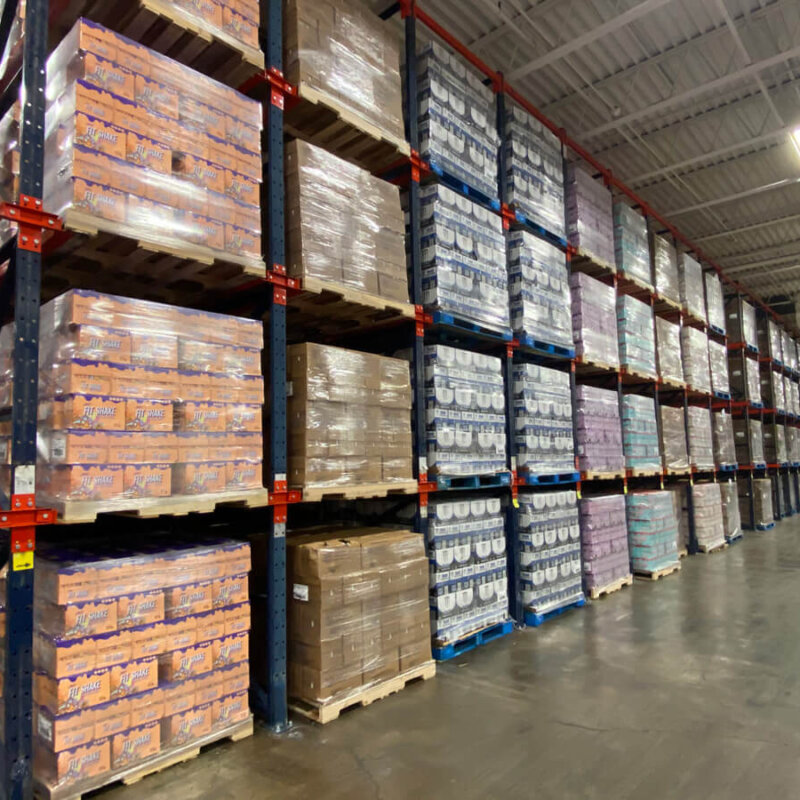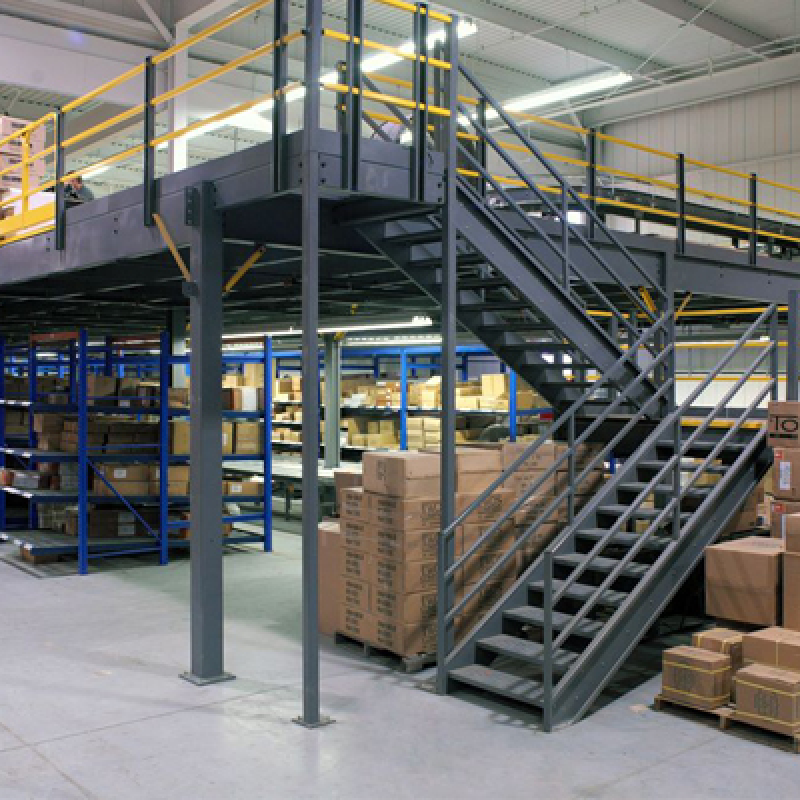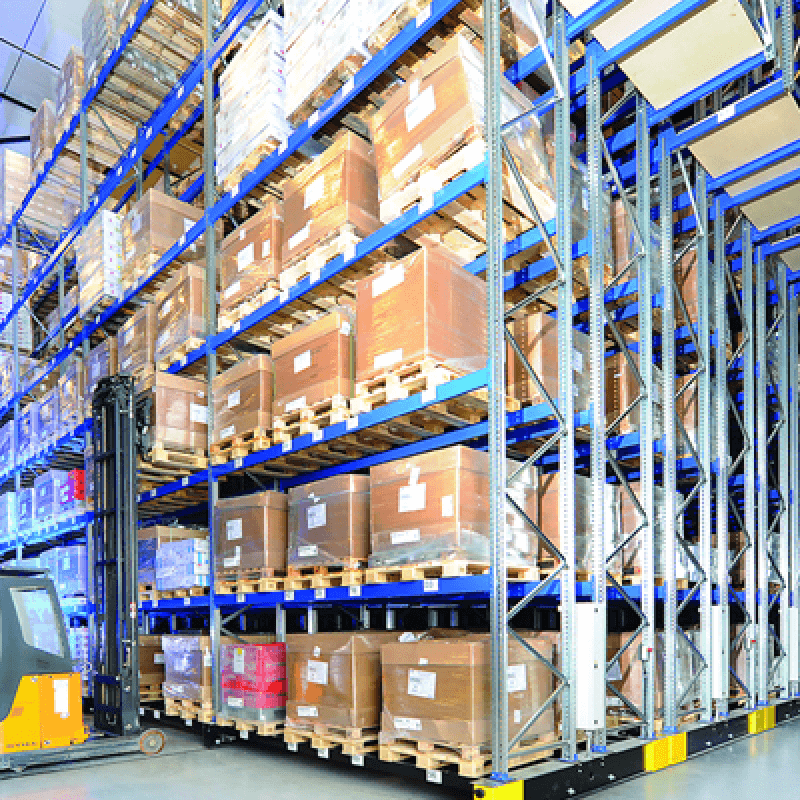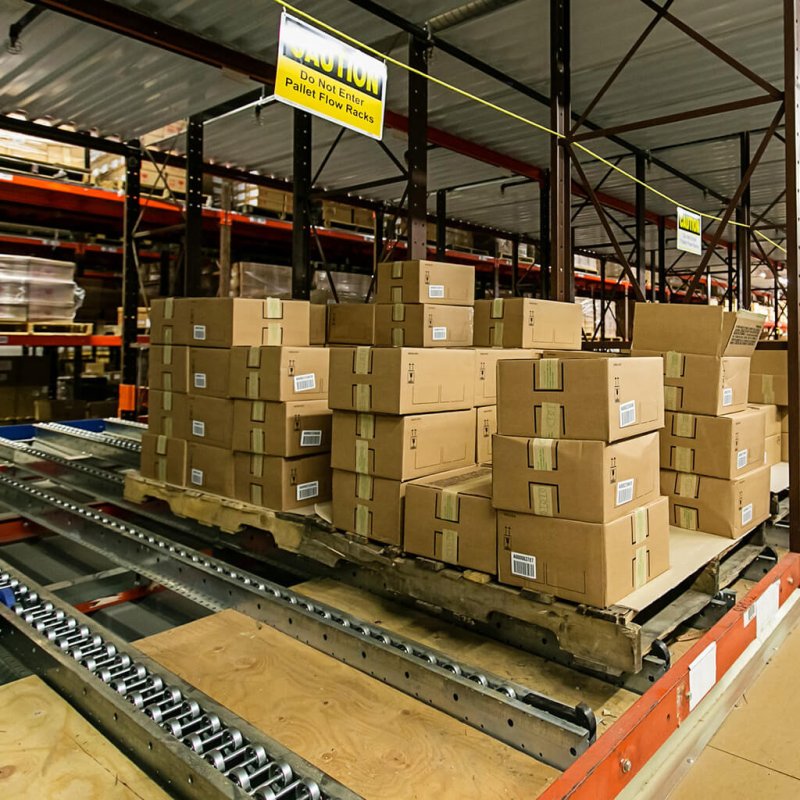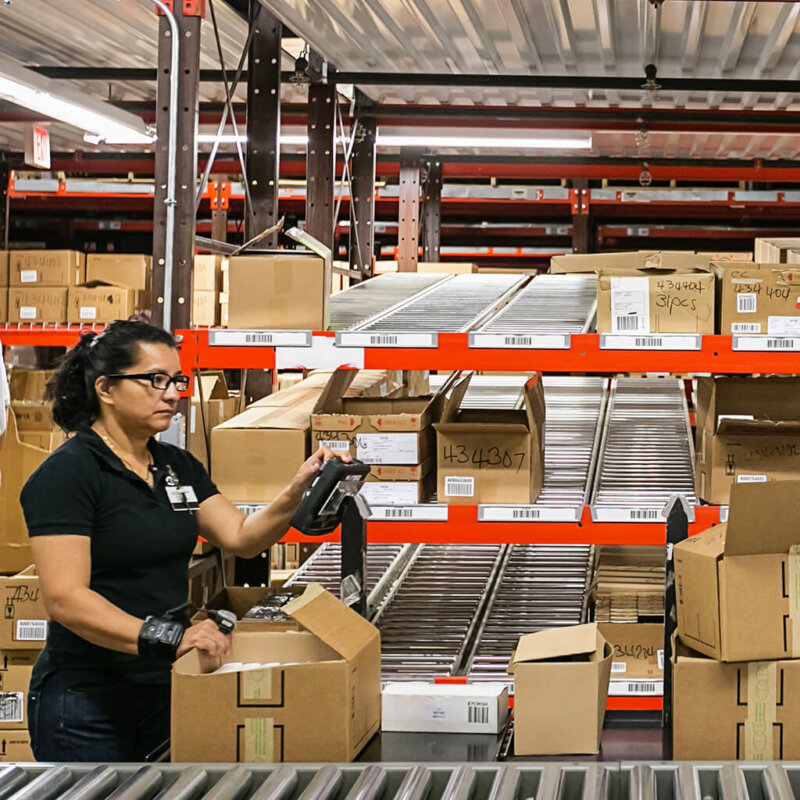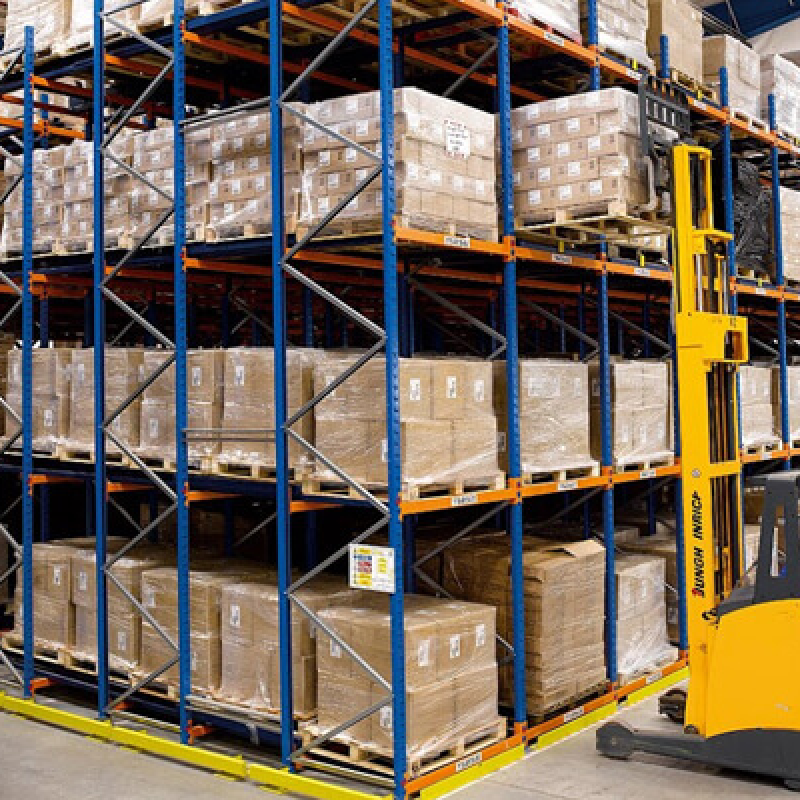
Push-Back Racks
Push-back racks provide an excellent combination of pallet accessibility and high density storage. In a push-back pallet racks system, a pallet is placed by the lift truck onto a “cart” and then “pushed back” into the rack by the next pallet being loaded into the rack system.
Although push back racking is the most capital intensive, it offers the highest density storage without the added liability of forklift operators entering the racking structure.
• Eliminates aisles, increasing storage density
• Flexibility to store multiple SKUs on each level
• Low profile cart stack offers maximum storage height
• Suitable for all pallet sizes
• Improved selectivity of multiple SKUs compared to drive-in rack
• Reduced forklift handling time compared to drive-in rack
• Decreased chances of forklift operators damaging rack compared to drive-in rack
• Minimizes honeycombing effect compared to drive-in rack
• Available in roll formed or structural steel
• Pallet is stored on a carts-on-rails system
• Each push back lane can accommodate 2-6 pallets per bay
• Pallet stops keep the pallet from rolling off the front end
• LIFO – Last In First Out storage
• Inventory with multiple SKUs
• Facilities with different sizes pallets
• Facilities with high turnover rate
Gallery
FAQs
Typically, each push back lane can accommodate 2-6 pallets
In push back systems, a fork lift loads the pallet onto a cart which moves along a rail system installed within the rack. When the second pallet is loaded, it pushes back the first pallet further into the rack and exposes the second cart for the pallet to be placed on. Contrarily, when the front pallet is removed, the pallets behind it slide forward to assume the front position and stops as they hit the pallet stop in the front end.
As the first pallet is loaded, it needs to always be placed on the highest cart available to maximize the furthest depth. Once the pallet is centered, the fork truck must drive the pallet at least an inch above the desired cart level and place it down. Make sure the pallet is level and not resting on the push plate. If the push plate is no longer visible, it means the storage lane is full.
It is important to reverse the fork lift slowly while unloading the front pallet because the subsequent pallets will slide forward at the same rate as your reverse. A slow reverse will keep the pallets steady and controlled until they hit the pallet stop in the front end. If you reverse too quickly, the subsequent pallets will fly forward hitting the pallet stop hard potentially causing damage to the pallet, product, rack, or even worse, hurt an employee.
Push back rack is perfect for high density storage systems that want the ability to store multiple SKUs on each level. Unlike drive in rack, push back rack offers a solution that doesn’t require fork lift operators to enter the rack structure which significantly reduces the chance of an operator damaging your rack.
Explore other racking systems we offer
Storage solutions for every industry
Interested in this product?
TALK TO A RACK SPECIALIST
We’ll recommend a custom solution for your space.

